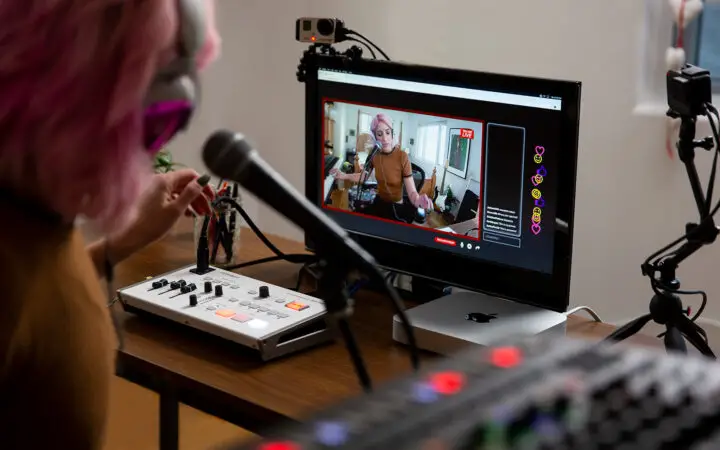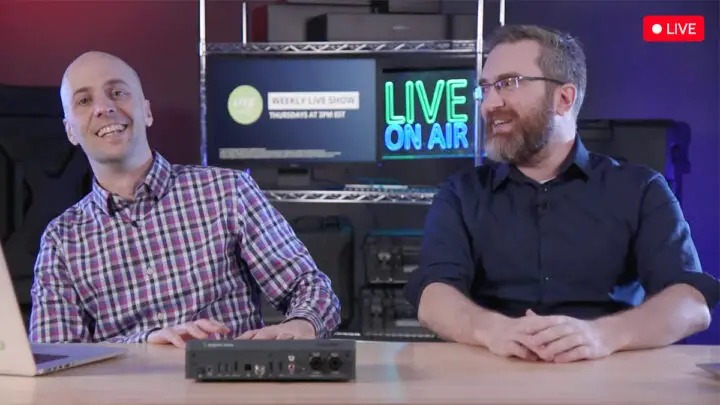Tips on Accessible and Engaging Live Stream 2024

Live streaming has become a powerful tool for connecting people and their content with worldwide audiences. Whether a person is delivering keynotes or sharing information on a particular topic, live streams provide an immersive experience that engages viewers in near-real time. However, creating live streams that are both accessible and engaging can be daunting to the uninitiated. Numerous pieces of technology are involved as well as challenges associated with building diversity into broadcast plans. The following are some tips to ensure live streams are accessible and engaging.
Choose the Right Platform

The platform a person selects to host their live stream greatly impacts the overall accessibility and engagement of their broadcast. Choosing a platform tailored to live stream and with professional-grade video, audio, and streaming technology saves time and ensures a reliable experience for viewers. A platform like epiphan.com allows streamers to create high-quality live streams and ensure their content reaches the widest possible audience.
Additionally, selecting a platform that offers features specifically designed for accessibility is important. This includes live closed captions, adjustable text sizes and colors, support for keyboard navigation, adjustable playback speed, and access to an integrated audio description feature. All these elements combine to create an experience that is accessible and engaging for all viewers.
Build Diversity into Your Broadcast Plans
To create a truly engaging live stream, prioritize diversity and inclusion in the broadcast. Start by creating an environment that actively welcomes diverse perspectives. This may be done by inviting panelists from different backgrounds to join your live stream, peppering content with thoughts from various cultural points of view, and acknowledging marginalized voices that may not always be heard.
Another key element for building diversity into a live stream is ensuring all viewers feel welcome and included. To do this, use features like multilingual subtitles or transcripts and options for changing the language used in the broadcast. Additionally, ensure captions are accurately transcribed and visible on the screen when needed.
Finally, know the live stream’s target audience and ensure the content is relevant and interesting. Streamers should ask themselves what topics, questions, or activities resonate most with their audience and include them in their broadcast.
Promote an Engaged Audience

Once the technical side of the live stream is taken care of, it’s time to turn attention to building an engaged audience. This can be done by actively encouraging viewers to interact with each other and participate in polls or Q&A sessions. Additionally, ensure there are specific goals for the live stream that viewers can help achieve by sharing their thoughts and ideas.
A person should also promote inclusivity with their audience during their live stream. This may be done by allowing viewers to ask questions, reacting to comments on time, and avoiding language that may be offensive or exclusionary. Finally, a person should make sure they are providing an experience that is both informative and entertaining for all viewers.
Create a Schedule a Stick to It
When it comes to creating an accessible and engaging live stream, consistency is key. A person should ensure they set a schedule for their broadcasts and stick to it. This will help viewers know when to expect new content and encourage them to stay engaged with the live streams over time. A consistent schedule will allow streamers to remain organized and better prepared for upcoming broadcasts.
When creating a schedule, it is important to note that live-streaming regulations vary from country to country. As such, people should know about any restrictions before planning their streams and adjusting accordingly.
Finally, when it comes time for the broadcast, streamers should start and end on time so viewers don’t feel like their expectations were not met. This will help ensure an enjoyable experience for all viewers and create a return audience for future broadcasts.
Post-Broadcast Wrap Up

Once a live stream has ended, a streamer needs to review the entire broadcast. This includes looking at metrics such as views, watch time, and engagement levels. Additionally, compile any feedback from viewers during the broadcast and make adjustments accordingly.
Lastly, thank the audience for joining the event and ensure they know when future broadcasts will occur. This is essential in helping build a loyal viewership and creating a positive experience for all involved.
Monitor Engagement and Gather Feedback
In live streaming, it is important to measure the success of a broadcast with metrics such as views and watch time. This will help streamers understand what resonates most with their viewers and adjust accordingly. Also, collect feedback from the audience on how to improve future broadcasts.
When monitoring engagement, paying attention to any negative comments or feedback posted in the live stream chat is important. A person should take this feedback seriously and be willing to make changes if necessary. Finally, a person should strive to create an environment where all viewers feel welcome, respected, and heard.
Monitor Technical Elements

Tech problems are inevitable when it comes to live streaming. Ensuring all technical elements are working properly before and during the broadcast is important. A person should check that their audio is clear, their video quality is up to par, and that streaming services like Twitch or YouTube are configured correctly.
Additionally, pay attention to any buffering issues or lag viewers may experience during the broadcast. If these issues persist, then adjustments need to be made for viewers to have an enjoyable experience. A streamer should have alternative solutions ready in case of any major tech issues so the show goes on without interruption.
Live streaming has proven to be an impactful method to connect with viewers in real time and create a unique experience that can’t be found elsewhere. However, streamers must take the necessary steps to ensure their broadcasts are accessible and engaging for all viewers. This includes creating a schedule, monitoring engagement levels and feedback, monitoring technical elements, and wrapping up after the broadcast. By following these tips, streamers will be sure they provide an informative and entertaining experience for all viewers.
